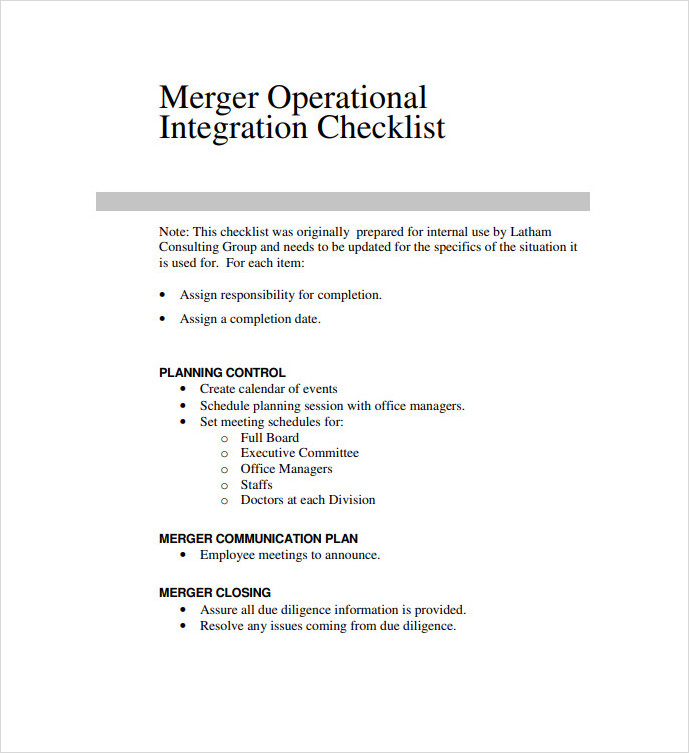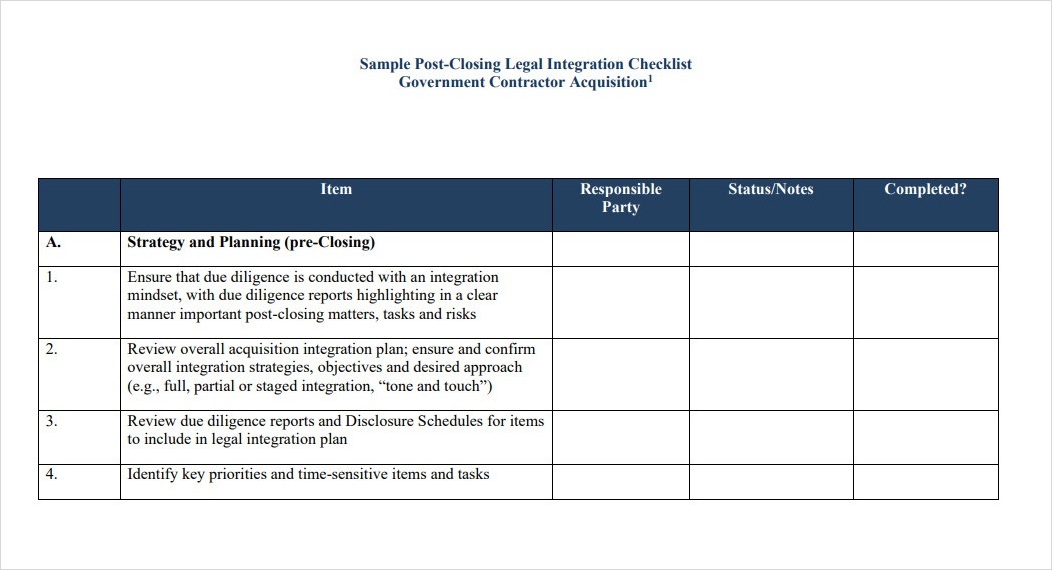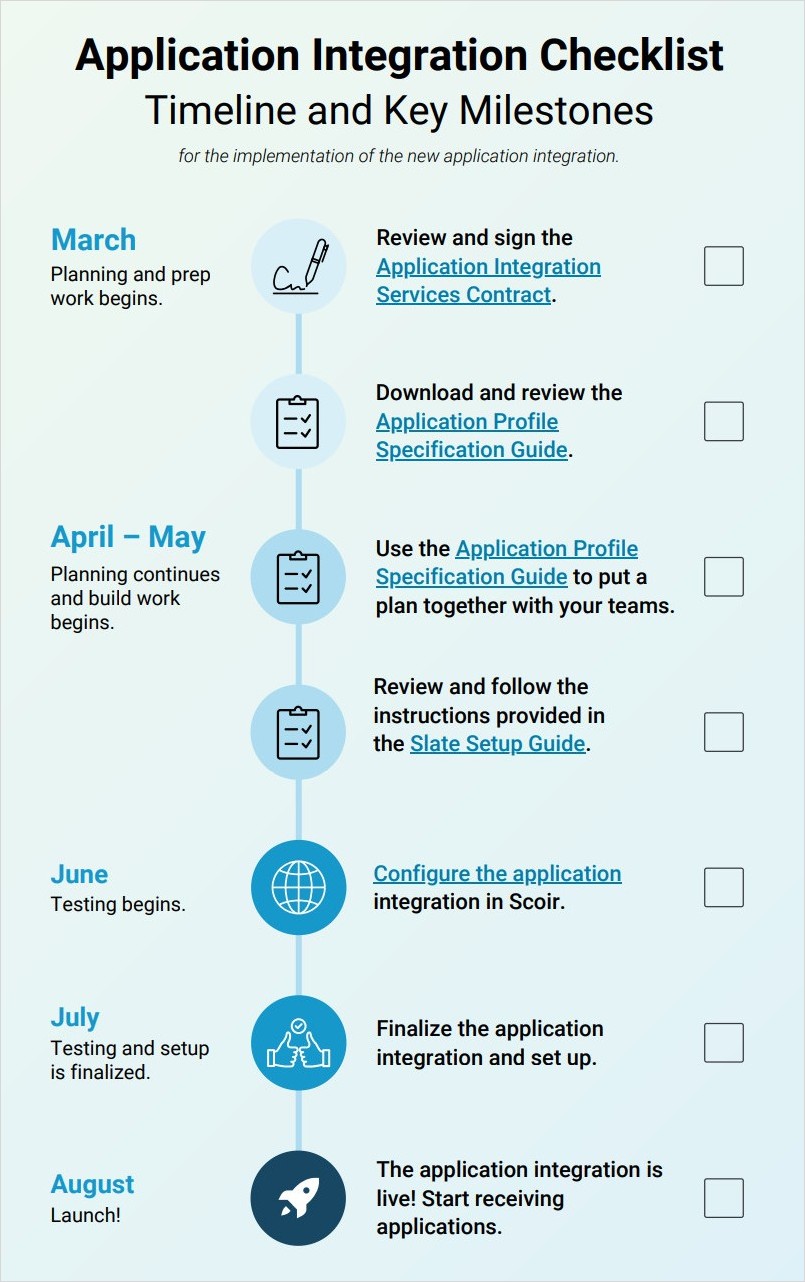
When integrating new systems or processes into your business, having a thorough checklist can be a game-changer. It ensures that you don’t miss any crucial steps and helps you stay organized throughout the integration process.
This article will discuss the importance of an integration checklist, how to create one and provide some tips for successful integration. Whether integrating new software, implementing a new strategy, or launching a new product, this checklist will be your go-to resource.
What is an Integration Checklist?
An integration checklist is a document that outlines all the necessary steps and tasks required for a successful integration. It serves as a roadmap for your integration process, ensuring that you cover all the bases and don’t overlook any important details. By having a checklist, you can easily track your progress and have a visual representation of what still needs to be done.







Having an integration checklist offers several benefits:
- Organization: It helps you stay organized and ensures that no steps are missed.
- Efficiency: By following a checklist, you can streamline the integration process and save time.
- Collaboration: A checklist can be easily shared among team members, promoting collaboration and transparency.
- Accountability: It provides a clear framework for accountability, as each task can be assigned to a specific team member.
- Documentation: A checklist serves as a record of your integration process, making it easier to refer back to in the future.
How to Create an Integration Checklist
Creating an integration checklist may seem like a daunting task, but with the right approach, it can be a straightforward process. Here are the steps to follow:
1. Identify the Integration Goals and Objectives
Before diving into the checklist, it’s essential to clearly define your integration goals and objectives. What are you trying to achieve with this integration? Are you looking to streamline processes, improve efficiency, or enhance customer experience? By having a clear understanding of your goals, you can align your checklist with your desired outcomes.
2. Break Down the Integration Process into Phases
Next, break down the integration process into manageable phases. This will help you stay organized and tackle one step at a time. For example, if you’re integrating new software, your phases could include planning, implementation, testing, and training.
3. Identify the Key Tasks for Each Phase
Within each phase, identify the key tasks that need to be completed. Be specific and include all the necessary steps. For example, under the planning phase, tasks could include identifying stakeholders, setting a timeline, and creating a budget.
4. Determine Dependencies and Prioritize Tasks
Some tasks may be dependent on others, meaning they can only be started or completed once certain prerequisites are met. Identify any dependencies and prioritize tasks accordingly. This will help you create a logical sequence and ensure that everything runs smoothly.
5. Assign Responsibilities
Assign responsibilities for each task to specific team members. This promotes accountability and ensures that everyone knows their roles and responsibilities. Communicate the expectations and deadlines associated with each task.
6. Set Deadlines
Set realistic deadlines for each task and phase. Be sure to consider any external factors or dependencies that may affect the timeline. Setting deadlines will help you stay on track and ensure that the integration process progresses smoothly.
7. Create a Checklist Template
Using word processing or spreadsheet software, create a checklist template. Include the phases, tasks, responsible parties, and deadlines. Leave enough space for team members to check off completed tasks or add notes. Make sure the checklist is easy to read and understand.
8. Test the Checklist
Before implementing the checklist, test it with a pilot integration or a small-scale project. This will help you identify any gaps or areas for improvement. Gather feedback from the team members involved in the pilot project and make necessary adjustments to the checklist.
9. Implement and Review
Once you’re confident in the checklist, implement it for your integration project. Regularly review the checklist and update it as needed. Encourage team members to provide feedback and suggest improvements to ensure the checklist remains effective.
Tips for a Successful Integration
Now that you have your integration checklist, here are some additional tips to ensure a successful integration:
- Communicate: Communicate the integration plans and objectives to all relevant stakeholders. This will help manage expectations and ensure everyone is on the same page.
- Provide Training: If the integration involves new processes or tools, provide adequate training to team members. This will help them adapt to the changes more smoothly.
- Monitor Progress: Regularly monitor the progress of the integration process. This will help you identify any bottlenecks or areas that require additional attention.
- Celebrate Milestones: Celebrate small milestones along the way to keep team morale high. Recognizing achievements boosts motivation and encourages continued progress.
- Document Lessons Learned: After completing the integration, document any lessons learned or best practices. This will help guide future integration projects and improve efficiency.
- Seek Feedback: Encourage team members to provide feedback on the integration process. Their insights can help identify areas for improvement and enhance future integrations.
- Continuously Improve: Use the integration process as a learning opportunity. Analyze what worked well and what could be improved, and apply these insights to future projects.
Free Integration Checklist Template!
An integration checklist is a valuable tool for ensuring a successful integration process. By following the steps outlined in this article and utilizing the provided tips, you can create a comprehensive checklist that covers all the necessary tasks and promotes efficiency and organization.
Remember, integration projects can be complex, but with a well-designed checklist, you can confidently navigate through the process and achieve your integration goals.
Integration Checklist Template – Excel